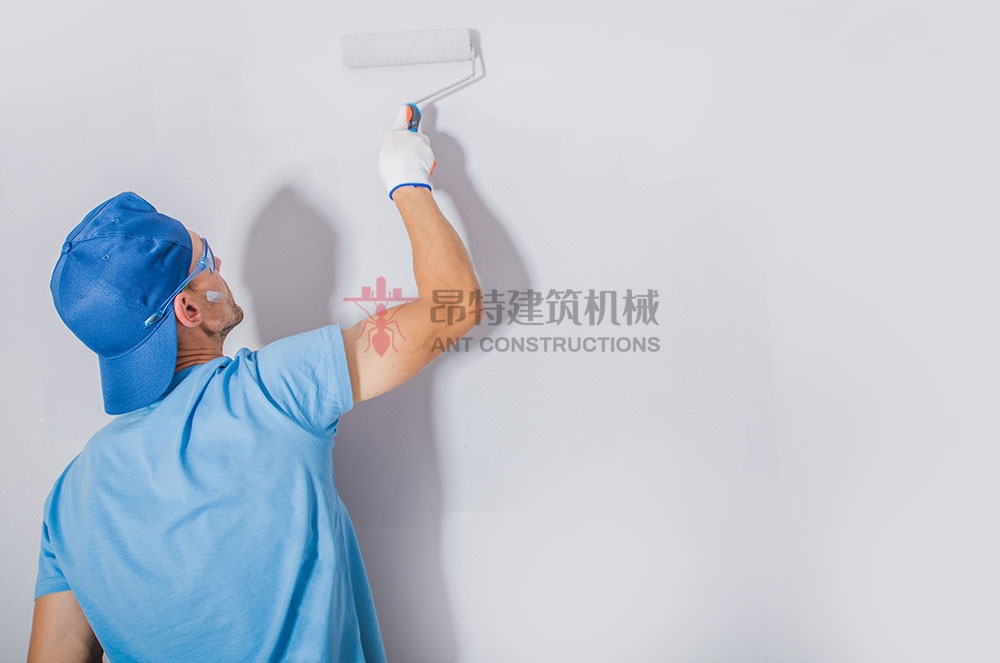Reasons of wall putty blister and how to fix the bubbles
Author:ANT CONSTRUCTIONS Comefrom: Createdate:2021/11/21 16:02:10 Hits:1561
Reasons of wall putty blister and how to fix the bubbles
Reasons of wall putty blister
In fact, the blistering of putty is not a particularly rare problem, the main reason for the blistering of wall putty is the problem of the wall. If the wall is pitted, uneven, and has small pits, It definitely blistered, and the amount of blistering depends on shear force of hydroxypropyl methyl cellulose. The higher the viscosity of cellulose, the more bubbles, and vice versa.
Wall putty blistering has a certain relationship with the base of the wall. If the maintenance period of the wall has not passed, the weak alkali will be very large, causing the putty layer with high weak alkali during the maintenance period, leaving traces of blistering after drying. If the base wall is too dry, or the speed is too fast when it is scraped, it will also cause the putty laminate with gas andgenerate air drums. The HPMC and putty powder must be stirred completely, completely dissolve the HPMC, hydrated time, lime powder andother additives can also prevent the putty powder from foaming.
The main ingredients in the putty powder are HPMC, RDP, white cement, calcium powder, talcum powder and hydrated lime.The function of HPMC is thickening, water retention and good workability. It does not participate in any reaction.
The reasons for the bubbles produced by putty can be divided into the following aspects:
Too much water.
If the wall base layer not dry and just scrape another layer on it will also cause bubbles. The solution is to control the water in an appropriate amount to ensure that the bottom layer is dry and then plaster the second time, the quality of the hydrated lime powder should also be stable.
The reasons of bubbles and other problems caused by poor batching of putty powder should be examined for various reasons. HPMC is not the most important, but the construction technology is more important.
How to fix the bubbles on the wall after used wall putty

When such bubbles appear, how should we solve them? In fact, after knowing the cause of the bubble, it is easy to solve it.
Let's talk about wall blistering first. If the reason of wall blistering is the wall base is too rough or uneven and caused the air holes blow up the putty, then we can apply the interface agent first, in fact, use plaster first. It is also possible to use it all the time, the purpose is to completely seal the gas inside so that it cannot be blown out. Then scrape putty on it, which can effectively solve this problem.
The blistering problem on the roof can be dealt with in different ways.
For example, if the roof is too smooth, the gripping force is not strong, and the finished putty drops and forms bubbles. In this case, how to improve its gripping power is the key. Therefore, we must firstly improve the gripping power of the upper layer. It can be an interface agent. After the interface agent dries, a seemingly smooth surface is formed, but the gripping force is very high. Because the interface agent is also called surface modifier, it can effectively improve the original performance of the surface. At this time, it will be much better to scrape the putty.
Finally, let's talk about the blistering problem of the lower roof. To be honest, this is one of the most important reasons for the blistering of our roof, and it is also the cause of most roof blisters. In the decoration, most decoration masters can solve this problem. Their solution is to use plaster.
The purpose of plaster is actually very simple. It is similar to the wall above, because plaster can be quickly formed and can seal the air, that is, the air hole is sealed, then scrap the putty. It will naturally not be able to blow bubbles.







